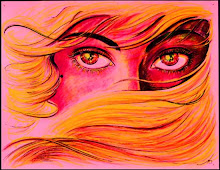2011. március 27., vasárnap
2009. november 12., csütörtök
benetton
Tibor Kalman was an editor and a journalist who believed that he had a moral obligation and a political desire to expose issues and make them as sexy as possible so an audience–primarily kids, but really everybody–would look at them.
That was why his work with Oliviero Toscani for United Colors of Benetton were extremely jarring and haunting.
In November, 1990, while reading Life, Tibor ran across a black-and-white documentary photo.
It showed an Ohio family around the bed of David Kirby, a 32-year-old man dying of AIDS in the Ohio State University Hospital in May 1990.
Tibor and Benetton approached the Kirby family and the photographer, Therese Frare.
Frare’s photo was part of a documentary on the lives of clients and caregivers in a hospice for people with AIDS and won the 1991 World Press Photo Award.
Benetton contributed generously to an AIDS foundation, with the family’s consent.
The family approved of the use of the image and came to New York for a press conference.
There was a collaborative feeling among all involved.
The image of a man dying of AIDS, surrounded by his family (his father, sister and niece), shows the terryfying sight of a body devasted by the HIV virus.
For a while, it became a central focus of the AIDS debate. It won the European Art Director Club award for the best 1991 campaign and the Houston International Center of Photography’s Infinity Award. In 2003 the photo was included in the Life magazine collection ‘100 Photos that changed the world’.
However, a number of AIDS activists believed that the photograph and its use in advertising actually painted AIDS victims in a negative light.
Others perceived the campaign as a vindication of homosexuality.
For some there was sensitivity about the implied connection between the deaths of David Kirby and Jesus. Many magazines refused to print it. Yet, in some countries, this photo became the very first campaign to talk about AIDS.
2009. november 6., péntek
Feliratkozás:
Megjegyzések (Atom)






